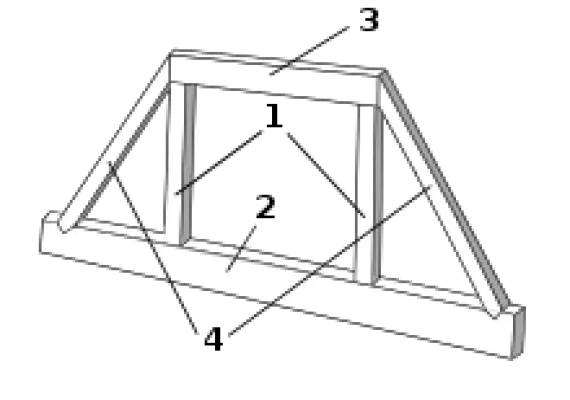Steel Pole Barn Trusses Cost |Pole Barn Structures Cost | Steel Pole Barn Vs Wooden Pole Barn
Steel Pole Barn Trusses Cost |Pole Barn Structures Cost | Steel Pole Barn Vs Wooden Pole Barn
Pole Barn Structures
Pole barns are traditionally constructed with wood framing and a metal roof, and this construction method is also the most common method for building a pole barn.
For pole barn trusses, there are many different options for wood framing, roofing, and roofing panels.
The first step is to plan out the size of the building and decide how many trusses you will need.
The number of trusses depends on the weight of the materials as well as the desired ceiling height.
The heavier the materials, the fewer the number of trusses you’ll need. From that point, decide on your framing options and your roofing options.
Pole barn roofs range in price from $6,000 to $15,000. They are generally less expensive than residential since they do not require the support of a ceiling or the installation of insulation.
Because of their vast, open spaces, pole barns are ideal candidates for steel trusses. These trusses range in price from $230 to $600 apiece.
Steel Pole Barn Trusses FAQs
How far apart should trusses be on a pole barn?
The trusses in a pole barn are spaced 8 feet apart, or up to 12 feet apart depending on the building design.
The trusses in conventional stick-frame construction are typically spaced 2 feet apart.
Trusses placed 8 feet apart may appear odd to many traditional stick-frame builders, but owing to the brilliance of contemporary engineering, it is a relatively typical construction style.
This may be traced back to building codes and structural design specifications. Residential “stick-frame” construction codes apply to the conventional “stick-frame” building system.
Post frame construction, as an engineered building system, falls within the provisions of “performance-based” building rules.
Both techniques demand that each component of a structure (truss spacing, insulation R-value, and so on) be built to a specific standard, but these criteria are enforced in various ways.
Are steel trusses cheaper than wood?
Steel roof trusses are often more expensive than wooden trusses, but they last far longer and require much less care.
Steel frames can also be easily recycled, making this a great alternative for the ecologically concerned homeowner or business owner.
How much do metal trusses cost?
Steel trusses are roughly twice as expensive as wood trusses. They cost between $100 and $500 each unit and are used for pole barns, commercial garages, and prefabricated metal structures such as sheds.
Metal trusses are often used in the light industrial, commercial, and agricultural industries.
Metal houses usually include customized steel-framed roofs, which are similar to stick framing in that the structure is constructed one board at a time.
Although steel may be used in residential roof building, it is expensive and difficult to locate a contractor with the necessary skills.
How much does 40-foot pole barn trusses cost?
A 40-foot wooden pole barn trusses cost from $135 to $155
How much does it cost to build a 30×40 pole barn house?
A pole barn is a cost-effective way to build your dream home. It can be as large as 30×40 and still only cost $10,000-$20,000 to construct.
These buildings are popular for their affordability and simplicity of construction.
They’re also great because they don’t require any special permits or zoning laws that other types of buildings might need in order to be built legally on the property where you live, such as single family homes or apartments with more than four units.
How do pole barn trusses affect structural integrity?
The ability of a structure to endure projected structural loads without breaking is referred to as structural integrity.
Any structure, regardless of size or location, must be built to properly withstand both vertical and lateral stresses.
It is critical to have well-designed trusses because if one collapses, the others will follow. The structure collapses as a result of the domino effect. That is not something we want to happen!
The truss profile, span, heel height, overhang, and web arrangement are determined by the unique design circumstances and will differ depending on the application.

